Except when planting in marginal land, it was rare for us to have to worry about salts building up in our soils. The recent droughts and resulting limitations on high-quality water for irrigation are leading to build-up of salts in areas where it previously was not a concern. Further regulatory limitations coming into effect will continue to limit water availability whether the drought continues or not. The timing is right, then for new technology and tools to come into use to help us better manage the leaching of salts and fertilizers.
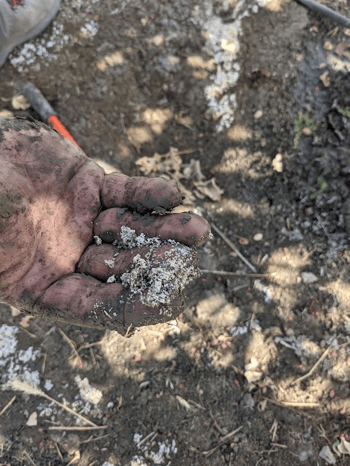
Example of soil with severe salt build-up
What is leaching?
Leaching in simple terms is the movement of salts through the soil by either irrigation or rain.
Another definition of leaching is the removal of nutritive or harmful elements from the soil by percolation. It can be seen as something that’s positive or negative.
When is leaching bad?
During the growing season when plants are growing, they need water and nutrients to produce the best yield they can. This is the time when growers apply fertilizer either in a dry form or through irrigation. Applying large amounts at once or applying too much water after can push or leach the fertilizer beyond the reach of the roots. This results in expensive fertilizers being wasted and it can also potentially contaminate groundwater.
When is leaching good?
In some parts of the world such as California, salts can tend to build up in the soil, especially on the surface and areas of the soil where the roots are active. This can cause issues with plant growth and infiltration, which makes irrigation difficult. If the salt level in the soil becomes too high or over the threshold of what is considered healthy, it is a good idea to leach the salts out of the root zone.
How much salt is too much?
Salt levels are measured in deciSiemens per meter (dS/m). Most crops, including apples, cherries, and almonds, begin to be significantly affected when salts get in the range of 4 to 5 dS/m. Upward of 8 dS/m can cause plant failure except for the very salt-tolerant plants such as pistachios. However, even pistachios will show marginal necrosis on their leaves when salts are as high as 8 dS/m.
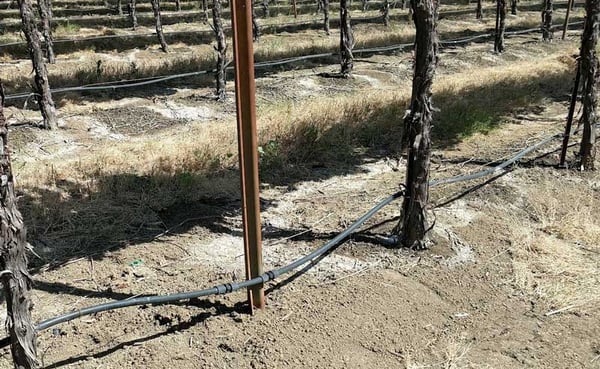
Salt rings can be seen on the soil surface
Tools for managing soil salinity
To better understand how water and salts are moving in the soil, Semios has developed two industry-first tools that can help.
Infiltration Map
With the Infiltration Map, you can see how far down the water is moving into the soil. This lets you know if you are irrigating to one foot or even deeper in the soil. When water is being applied to remove salts from the soil, you can use the Infiltration Map to assess whether you are applying enough water to move salts from the root zone.
Salt Map
After you do all the work, how can you tell if your leaching practices are effective?
Semios’ Salt Map offers a view of salt concentration at each depth in the soil. You will know that your leaching practices are effective if the Salt Map shows reduced amounts of salts after the irrigation.
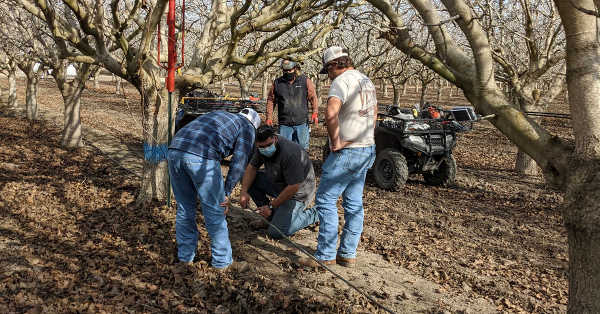
The Semios Field Services Team is installing soil moisture probes on a customer site.
These probes help collect the data used in the Infiltration and Salt Maps.
The historic droughts in the West limit the amount of clean surface water and force us to rely more heavily on groundwater. Groundwater inevitably has more salts that will build up in the soil. One year or two years with excessive salts may not have a significant impact on crop productivity. But the longer one goes without properly removing salts from the soil, the harder it is to fix a growing problem.
California has always been a desert with limited water availability, and regulations such as SGMA will only make it more important to regularly leach salts from the soil. In the past, we had to do this blindly, but now with the Semios Infiltration Map and Salt Map, you don’t have to blindly irrigate to leach salts, and then hope it was effective. Instead, you can see in real-time if you are effectively moving the salts out of the root zone to protect your crop.

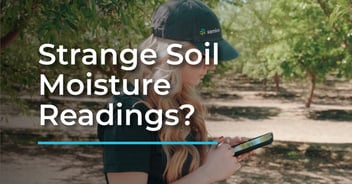
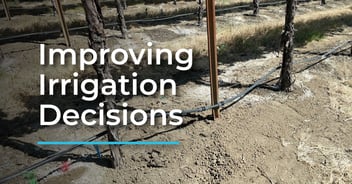
.jpg?width=352&name=3-Reasons-to-Monitor-your-Winter-Crops-Preview-Image%20(1).jpg)